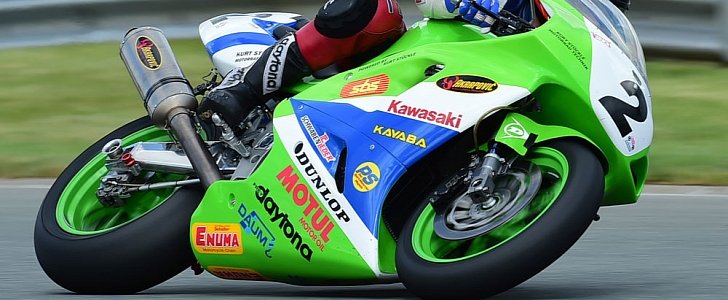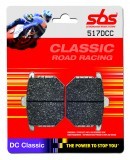Racing an old motorcycle has its ups and downs, especially with finding replacement parts or some consumables. SBS Friction is giving a hand with the latter part, as it just revealed its new Dual Carbon Classic racing pads for serious racing historians.
Derived from more than 25 years of World Superbike and MotoGP Championships expertise, the new pads were inspired by SBS’ successful championship winning Dual Carbon racing pad, which is manufactured using NRS Technology.
The mentioned technique eliminates the need for glue and creates a virtually unbreakable bond between the friction material and the backing plate.
"SBS has developed a modern racing pad for those who are looking for a little nostalgia,” SBS NA Market Manager Chris Jensen said. “With a smooth initial bite, it is ideal for classic fork construction and traditional bias-ply tires. The DCC racing pads have a progressive brake performance, which offer superior brake power and frontend feel.”
“Compatible with stainless and cast iron brake rotors delivering lower thermal conductivity and thermal load. Any racer looking to order SBS pads now or in the future can find their closest authorized SBS Racing Dealer at: www.racingbrakesusa.com”
The Dual Carbon pads perform great on cast iron and stainless steel rotors, and are heat cycles at the factory, so no thermal bed-in is required. The company also says the pads offer long life and are very easy on the rotors.
You can get the SBS Dual Carbon Classic racing pads at your SBS Racing Dealer for $47.95 a pair. However, the manufacturer has an important notice coming with the new product. Since the brake pads were designed for racing and require heat to function due to their carbon base, street use is absolutely not allowed.
In simple words, these brake pads offer best braking effects when they heat up. Real traffic conditions don’t allow you to reach those temperatures so fast, translating into reduced braking characteristics.
The mentioned technique eliminates the need for glue and creates a virtually unbreakable bond between the friction material and the backing plate.
"SBS has developed a modern racing pad for those who are looking for a little nostalgia,” SBS NA Market Manager Chris Jensen said. “With a smooth initial bite, it is ideal for classic fork construction and traditional bias-ply tires. The DCC racing pads have a progressive brake performance, which offer superior brake power and frontend feel.”
“Compatible with stainless and cast iron brake rotors delivering lower thermal conductivity and thermal load. Any racer looking to order SBS pads now or in the future can find their closest authorized SBS Racing Dealer at: www.racingbrakesusa.com”
The Dual Carbon pads perform great on cast iron and stainless steel rotors, and are heat cycles at the factory, so no thermal bed-in is required. The company also says the pads offer long life and are very easy on the rotors.
You can get the SBS Dual Carbon Classic racing pads at your SBS Racing Dealer for $47.95 a pair. However, the manufacturer has an important notice coming with the new product. Since the brake pads were designed for racing and require heat to function due to their carbon base, street use is absolutely not allowed.
In simple words, these brake pads offer best braking effects when they heat up. Real traffic conditions don’t allow you to reach those temperatures so fast, translating into reduced braking characteristics.



